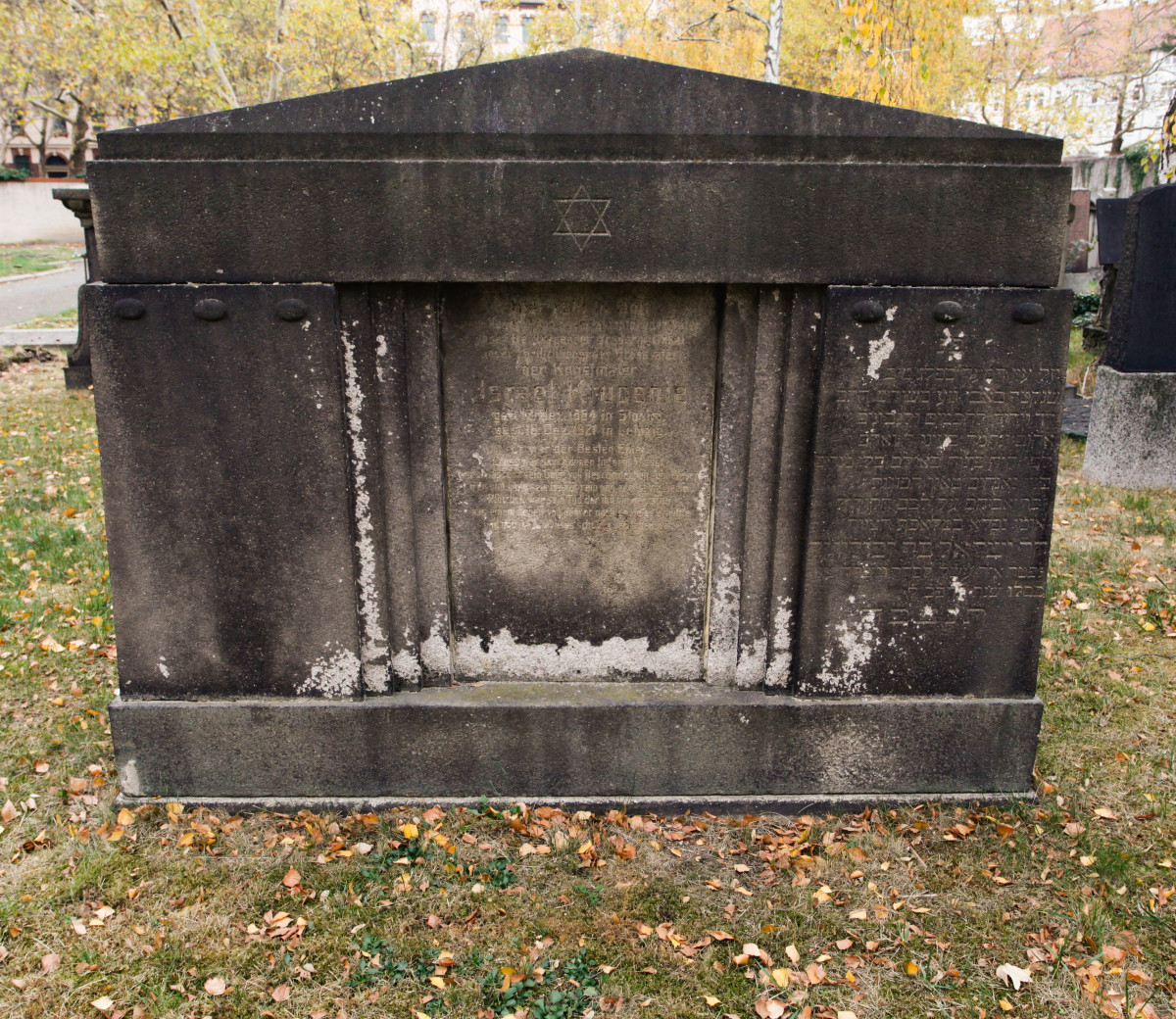
Krupenie, Israel
Krupenie
Israel
–
Dec 12, 1864
Ilonin
Dec 16, 1921
–
–
51
101
–
–
Kunstmaler
–
Slonim
–
Leipzig
„… der Besten Einer … “ + 5-zeiliger Text, Zuweisung nach Übersetzung v. Dr. T. Arndt, UNI Leipzig
Yes
Yes
Doublestone
Position of the Headstone
V
right
4
–
11
3b
–
–
–
–

Vorn
hebrew , german
verwittert, schwer lesbar, mit hebr. Übersetzung
Hier ist begraben - /
Rinne Auge von Träne wie ein Wasserlauf/
da gepflückt wurde in seiner Blüte ein Stamm von der Wurzel des Volkes/
zart und freund den Weisen und den Verständigen/
geleliebt und freundlich in den Augen von G’tt und Mensch/
Sein Herz war offen wie eine unermeßliche Halle(?)/
Seine Söhne/ Kinder seufzen Unterlaß/
das Andenken ihres Vaters auf ihr herzgeschnitten/
ein wunderbarer Künstler in der Malerei/
das war Herr Israel, Sohn von Herrn Sebulon (?) sel. Andenk(?)/
verschieden auf den Sabbat-Vortag des Abschnittes „Und er schickte“, 15./
Kislew des jahres 682 kleiner Zählung/
Seine Seele sei eingebunden in das Bündel des Lebens.